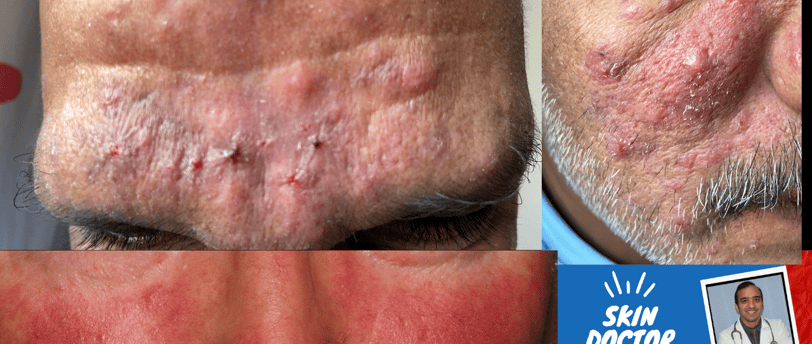Rosacea everything you need to know
Dr.Sujith Karimbil
8/13/20232 دقيقة قراءة


Title: Rosacea: Everything You Need to Know
Introduction: Rosacea is a common skin condition that affects millions of people worldwide. While it often manifests as facial redness and visible blood vessels, it can have a range of symptoms and impacts on an individual's physical and emotional well-being. In this comprehensive guide, we'll cover everything you need to know about rosacea, including its causes, symptoms, triggers, treatments, and tips for managing this condition effectively.
Understanding Rosacea: Rosacea is a chronic skin condition that primarily affects the face. It typically begins with episodes of facial flushing and can progress to persistent redness, visible blood vessels (telangiectasia), and even the development of small red bumps or pus-filled pimples. Although it can affect people of all skin types, rosacea is more common in fair-skinned individuals.
Causes of Rosacea: The exact cause of rosacea is not fully understood, but several factors are believed to contribute to its development:
Genetics: A family history of rosacea increases your risk of developing the condition.
Dysfunction of Blood Vessels: Abnormal blood vessel functioning may lead to flushing and redness.
Inflammation: Chronic inflammation is thought to play a significant role in rosacea's symptoms.
Symptoms and Types: Rosacea can manifest in various ways, leading to different subtypes:
Erythematotelangiectatic Rosacea: Characterized by persistent redness and visible blood vessels.
Papulopustular Rosacea: Presents with red bumps (papules) and pus-filled pimples (pustules) in addition to redness.
Phymatous Rosacea: Results in skin thickening, often on the nose, leading to a bulbous appearance.
Ocular Rosacea: Affects the eyes, causing dryness, redness, and a gritty sensation.
Triggers: Certain factors can exacerbate rosacea symptoms:
Weather Conditions: Extreme heat, cold, wind, and sunlight can trigger flare-ups.
Spicy Foods and Alcohol: These can cause facial flushing and exacerbate symptoms.
Stress: Emotional stress and anxiety can lead to increased blood flow and redness.
Skin Care Products: Harsh skincare products or those containing alcohol can worsen symptoms.
Physical Activity: Intense exercise or activities that lead to excessive sweating can trigger flare-ups.
Treatment and Management:
Topical Treatments: Prescription creams containing ingredients like metronidazole or azelaic acid can reduce redness and inflammation.
Oral Medications: Antibiotics, both topical and oral, can help control inflammation and bacterial overgrowth.
Laser and Light Therapy: These treatments can target visible blood vessels and redness.
Avoid Triggers: Identifying and avoiding triggers can significantly reduce flare-ups.
Gentle Skincare: Use gentle, non-irritating skincare products and avoid over-cleansing.
Sun Protection: Sunscreen with a high SPF and broad-spectrum protection is essential.
Emotional Well-being: Living with rosacea can impact emotional health. Seeking support from friends, family, or support groups can help individuals cope with the challenges of managing the condition's visible effects.
Conclusion: Rosacea is a complex condition with a range of symptoms and triggers. While there is no cure, understanding its causes, recognizing triggers, and seeking appropriate treatment can help individuals manage and alleviate its impact on their daily lives. If you suspect you have rosacea, consulting a dermatologist is the first step toward effective management and improving your skin's health and appearance.
